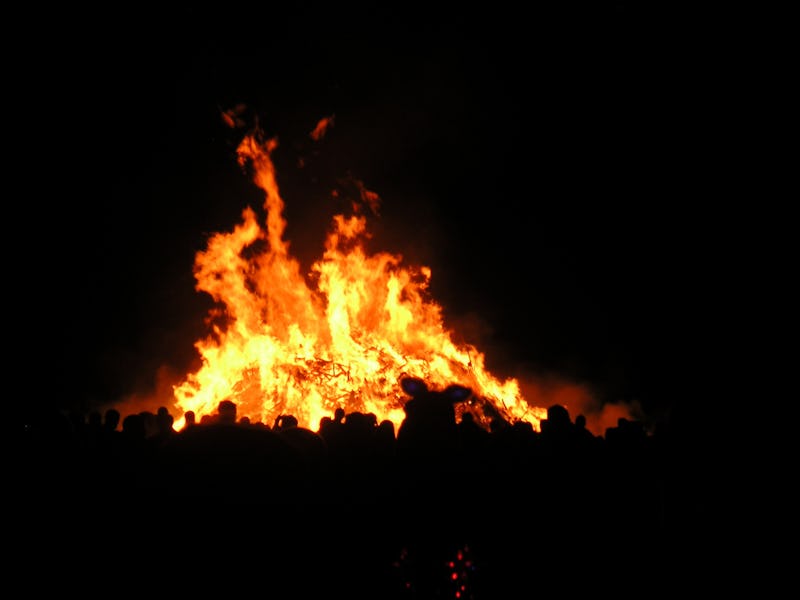Good Job Boy Scouts/Druids: Pyramidal Fires Achieve Maximum Burn
Mathematics, meet pyromania.

Mathematicians of a certain stripe love explaining things in ratios: sea shells, pretty faces, and, now, cooking fires. To achieve that hot hot heat, according to Duke University mechanical engineer Adrian Bejan, a fire should take on the shape of a pyramid: A base about as wide as it is tall. Boy Scout pack leaders, rejoice.
The mathematical formula for maximum temperature, as reported Monday in Nature Reports, is dependent on high permeability at the base as well as a sweet spot of nearly equal height and base:
The resulting cone is the stereotypical bonfire shape, one that’s common throughout history, Bejan argues. His is a fairly simple model — one that doesn’t take into account fuel types or air-speed velocities — but it does have some interesting corollaries. Higher gravity means hotter fires: “The temperature of the hottest fire increases in proportion with g^1/4,” writes Bejan, “therefore the same fire will be hotter in a higher-g environment, in a centrifuge rotating at high speed, or on a planet just like Earth but larger.”
University of West Florida bioarcheologist Kristina Kilgrove points out that there are plenty of other reasons for fires — waging war and burninating crops come to mind — but this could be the best way to heat up one spot, especially if you’re a Webelo colonizing Kepler 62e.